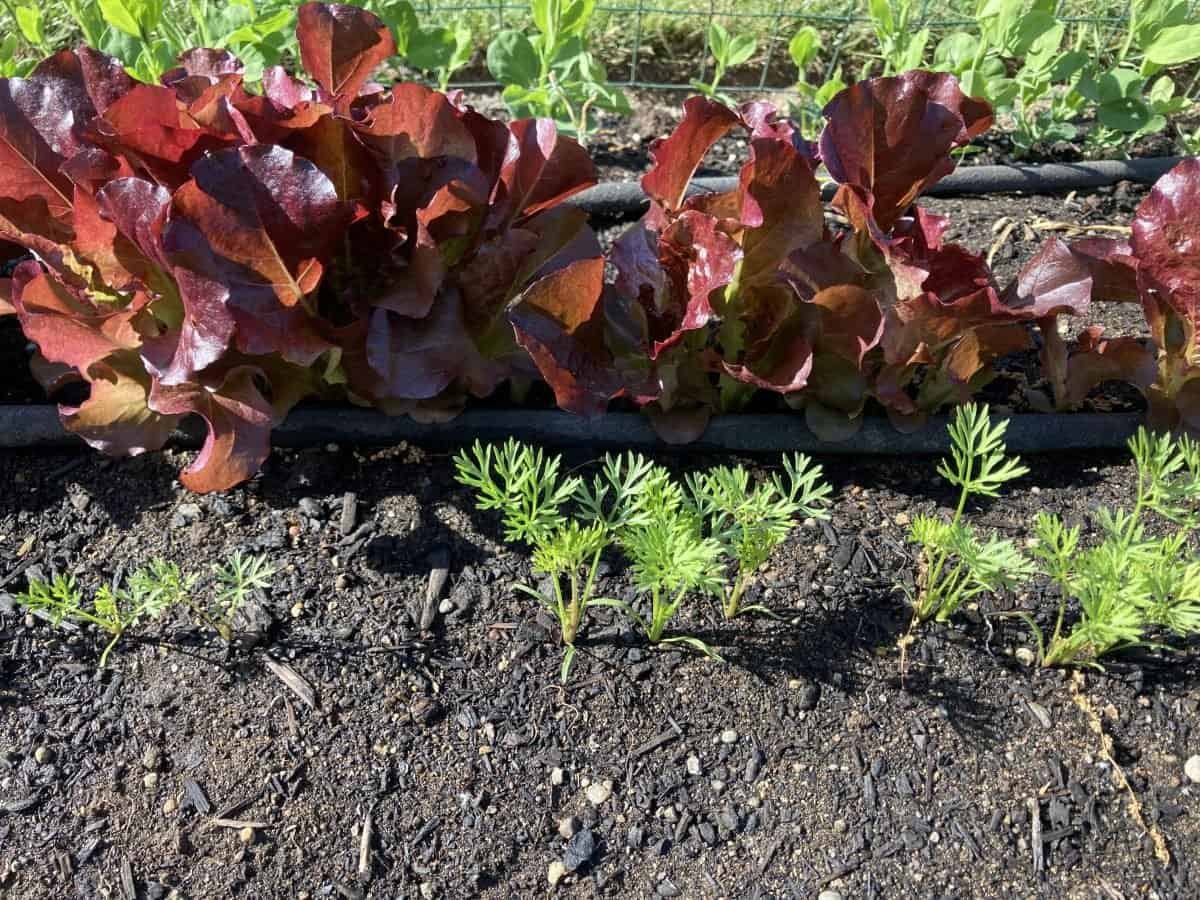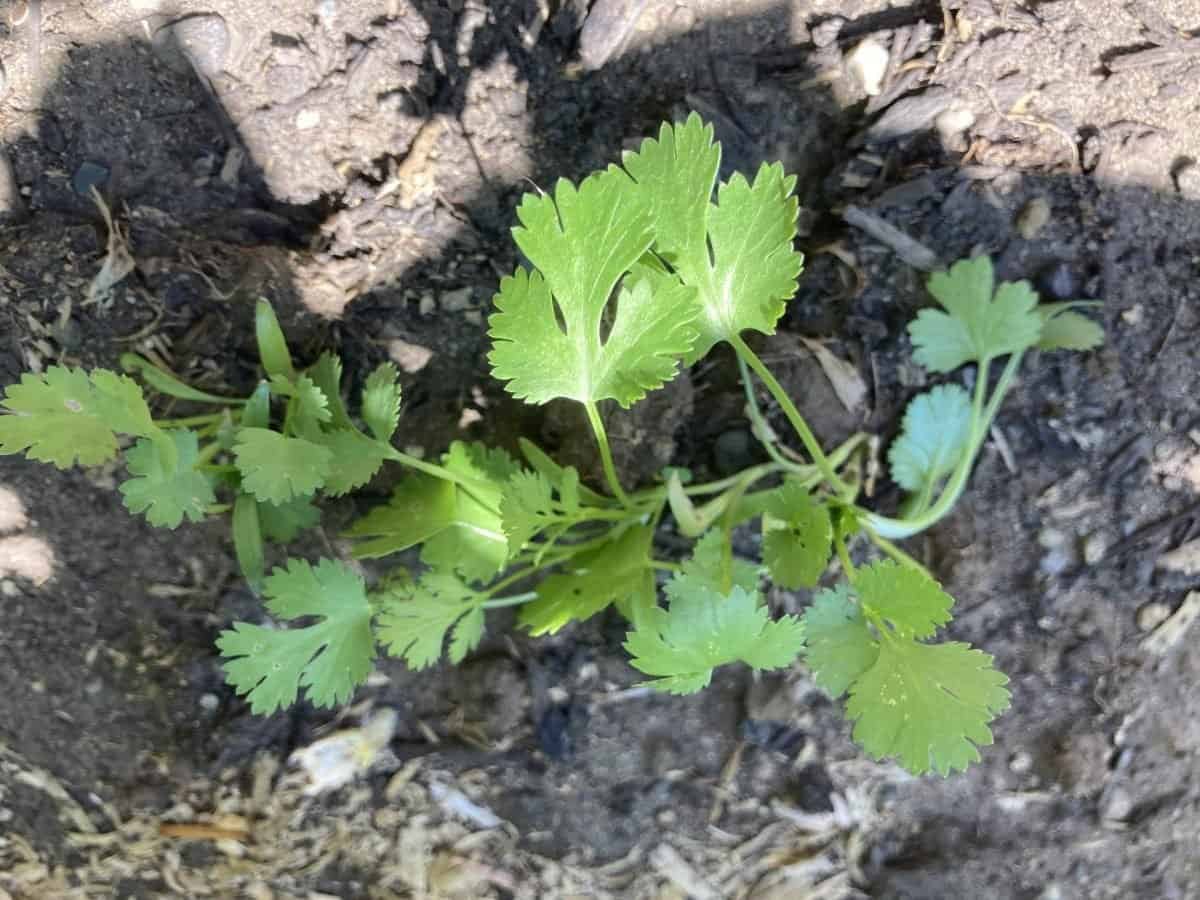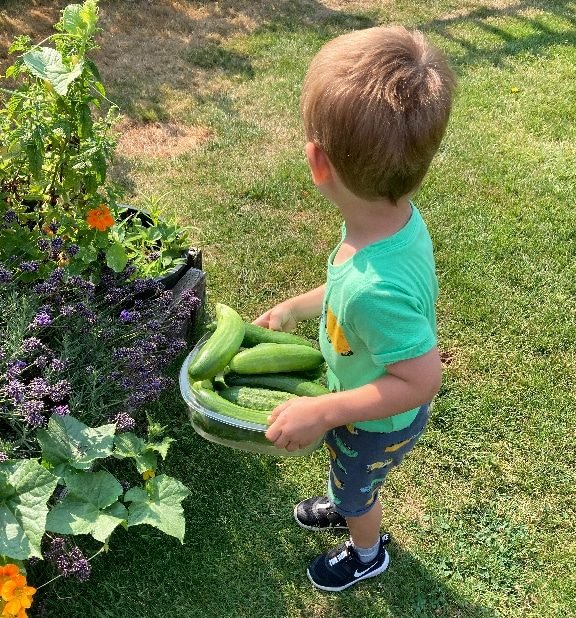I have been growing blueberries for over 15 years with great success, here are some suggestions for you to grow the best blueberries possible. Blueberries are great for youngsters to grow and pick since the plants have no thorns. Below I will share my secrets to growing the best Blueberries for year-round enjoyment.
Not only are the blueberries great plants in spring and summer with foliage and berries but they also have great winter color when the branches turn a brilliant red to add color in the dead of winter. They are known as ornamental fruit-bearing plant that is a must-have plant in your yard.
I will go into great detail to explain how to grow the best blueberries in your garden with easy tips from selecting varieties to planting and caring for them.
In 2024 I became certified as a Master Gardener. In these classes, I learned some better techniques for growing blueberries that I incorporated into my blueberry growing, producing the largest crop with the largest berries I have ever grown.

The two most important changes I made were to prune the plants in late winter more and to add blueberry mulch (I will go into more details on pruning later in this article).
All About Blueberries
This is a berry that will grow just about anywhere as long as you have the correct soil conditions and the correct pH.
Blueberry benefits
Blueberries are considered a superfood, providing antioxidants and high in vitamin C. The blue color comes from a compound called anthocyanin that is contained in the blueberry plant. They are one of the best fruits to reduce heart disease, cancer, improve skin health, and blood pressure as well as bone strength.
Blueberries have many different flavors from sweet to tart or spicy and are always juicy.
They can be added to a variety of foods you prepare to enhance their flavor and add nutritional benefits.
Blueberries are easy to grow and care for that will produce years of fruit with minimal effort.
Health & Nutritional Benefits
- 1 cup of blueberries has 80 calories
- virtually fat-free
- 25 % of daily required vitamin C requirements
- 4 grams of fiber
- One of the richest foods in antioxidants
The Best Blueberry Varieties
There are many varieties of blueberries, below I have listed my top 6 blueberries to grow, if you have a favorite not on this list please email me your favorite and details so that I can share them with others.
Duke
- This is one of the most planted blueberries available. It is known for its early, heavy crop of large firm sweet blueberries. It blooms late but produces fruit early in the season which helps to protect blossoms from frost. The plant may need trellis support due to the large clusters of fruit.
Bluecrop
- Bluecrop is another of the most planted blueberries across the U.S. due to its long crop production throughout the summer and its resistance to disease. It is a heavy-producing plant that produces large sweet berries.
Elliot
- Elliot is known for its late-season crop sometimes ripening as late as September. Berries are tart and slightly spicy as they ripen to full sweetness. This is a medium-sized berry that can be enjoyed after others have faded.
Liberty
- This blueberry is known for its distinctive flavor, spicy and aromatic. This is a very late crop-producing blueberries in August and even September that is medium-sized but has a large crop.
Draper
- Draper is a large berry that is described as crisp and sweet. The crop is an early to mid-season berry that is usually found in supermarkets due to its production and shelf life.
Chandler
- This berry is known for its extremely-large berries and lengthy season. Chandler also has a high yield and is one of the great blueberries for visual impact on salads due to its extreme size. This is a must-grow for you to add to your garden.
How to Grow the Best Blueberries: Preparing your site for Blueberry Plants
First, you need to select a site that receives sun for most of the day, ideally, 8 hours or more of sun will produce the best conditions for your plants.
The next essential consideration is the soil. Blueberries need a pH of 4.5-5.5 and an organic matter soil that is well draining. Since blueberries have a root system that grows near the surface of the soil you need to be very careful about disturbing the soil around the plant once you have planted them.
A good way to maintain your pH levels for your blueberries is to add aluminum sulfate yearly in early spring
Blueberries need to have more than one variety planted since they are not self-pollinating, ideally, you should plant 3 or more varieties for pollination and to extend the crop production.
If you are amending the soil you can add Elemental sulfur which is a slow-release organic approved fertilizer. I would recommend fertilizing with 1/2 a cup after the first year and for larger plants 1 cup every other year. Fertilizer should be applied in early Spring or in the Fall.
Since the roots are on the top portion of the soil do not scratch any fertilizer in just spread it out around the plant evenly out to the drip line of the plant.
Another good option in Holly Tone which is a great organic slow-release fertilizer, Blood meal, or Cottonseed meal. Do not over-fertilize blueberry plants it can cause more damage than good.
Care of Blueberry plants
Once the blueberries are planted they are very easy to care for other than watering regularly especially when the fruit is setting on and ripening, they do not take much care through the growing season other than fertilizing lightly in early and late spring.
The ideal pH for Blueberries is between 4.5 and 5.5.
Plant knowledge
Fruiting buds on your plant look like this, they can be recognized since they are larger, the smaller thinner buds are the leaf buds for this year.

Soil requirements
Soil for blueberries needs to be acidic for best results. You can add peat moss, bark, or sawdust from pine or fir but do not use cedar or redwood bark. Composting 2-4″ with these materials every other year keeps your blueberries healthy and happy.
Site selection
Blueberries require a sunny well-draining soil location for the best growth. They can be planted directly in the garden, raised beds, or in pots or planters. Allow plenty of space for plants since they can grow 2-3 feet around and over 6 feet tall with time. If you are planting in rows allow 6-8′ apart to give them plenty of space to grow and for you to pick the blueberries.
Planting
Dig a hole large enough to provide 6-12″ of fill soil between the rootball and the sides of the hole. Remove the plant from the container and spread the roots out if they are tightly gathered, be careful not to break the roots when spreading them out.
The plant should be slightly raised above the hole height, fill the hole with water 1/3 and add soil to mud in the plant to help in the transition. Build a water basin around the outside drip line and add acidic mulch to top dress.
Pruning

This is one of the most important steps but sometimes the most difficult to believe in doing and that is pruning your plants yearly and removing flower buds the first few years to send all energy to the growth of the plant. Once they are mature you should prune yearly in the winter before buds appear (January or February). It is something I have had difficulty doing. By pruning it will produce larger fruit and a healthier plant. As you can see this plant needs to be pruned next year to remove some of the older growth.
You can recognize the difference between older canes and newer ones by the color, the newer growth is yellow or green and the older growth is dark brown. The experts recommend pruning as much as 1/3 of the old-growth each year leaving 7-10 strong canes for best results. Also important to remove any dead or damaged branches.
The pruning tips I learned in 2024 that I incorporated were first to trim all dead and damaged stems (this may take several times walking around the plant to find and remove). The next step is to remove very thin canes that cannot support fruit usually on the bottom of the canes. Last is to remove the oldest canes, if you have not pruned your plants each year remove the largest older canes no more than 1/3 of the plant (I removed 4-5 of the oldest canes). This will open up the plant for good ventilation and will promote new growth.
Not only did I get the largest crop I have ever had in 20 years but the plants have lots of new growth both on the existing canes but also new canes that are coming up at the base of the plants. I even have two new plants that have sprouted.
Harvesting Blueberries
Blueberries are one of the easiest berries to pick since they do not have thorns and the bushes are 4-6′ tall so that you do not have to stoop over to pick. Berries are ripe when deep blue in color and firm, you may notice not all berries are ripe at the same time so be selective to pick only the ripe berries. The others will ripen within days or weeks depending on the sun and temperatures. I have had a bush that we have picked berries on for over a month which makes it nice to spread the harvest out.
Pick them without the stems and do not forget to look down low to gather berries that are hidden under the leaves.
Berries can start as early as June and others are much later in July and August, it also depends on how much sunlight they get as to how soon they will ripen.
Shrub color value of Blueberries
Blueberries are not only great to eat but in the Fall they provide a burst of color on the leaves and stems later in the winter that will brighten up your winter garden color.

Recipes and Storage of Blueberries
Blueberry Pancakes
I prefer to use Kodiak pancake mix but you can use another brand.
follow pancake mix directions except I prefer to reduce liquid slightly to make for a thicker pancake
Remove and defrost 1 cup of blueberries
heat pan at medium-low temperature and add butter
Once butter is melted add pancake mix
Add blueberries spreading them out so that you can enjoy blueberries in each bite
topping of your preference of pure maple syrup or berry syrup
Blueberry Smoothies
Combine in blender
1/2 to 2/3 cup orange juice depending on how thick you like your smoothie
1 cup blueberries
1 frozen banana
optional to add
1/2 cup yogurt
1/2 cup strawberries or other fruit
blend until the consistency you prefer
Freezing Blueberries
To freeze the blueberries spread them out to remove any stems and leaves that many have been collected when picking them. Next spread them on a baking sheet and place them in the freezer, after a few hours you can fill freezer bags with blueberries and place them in the freezer for use later. If you want to skip placing them on a baking sheet you can place them directly in freezer bags and freeze them. Do not wash the blueberries before freezing, this will cause the blueberries to stick together making them difficult to remove and use once they are frozen.
Now that you have all the information on how to grow the best blueberries and which varieties to grow you need to get started growing your blueberries.




